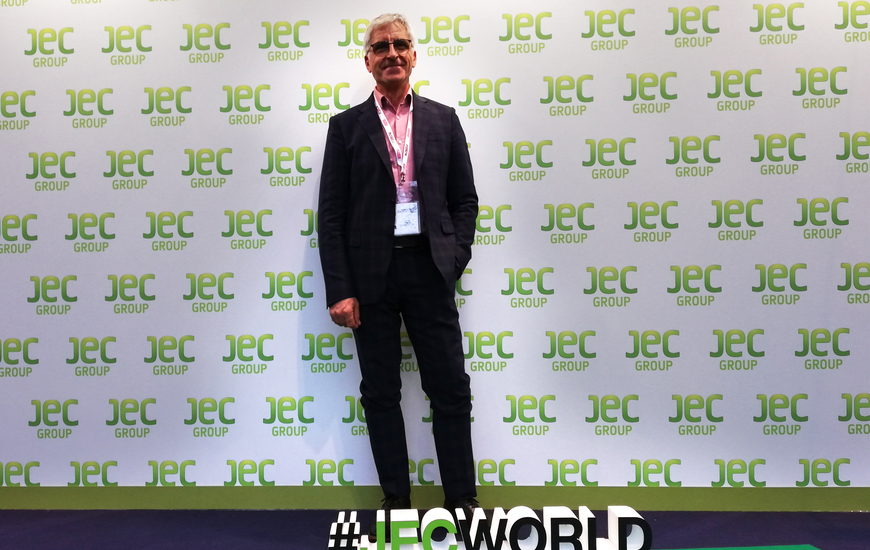by NICOLA CATENARO
Composites Portal and Portale Compositi continue the journey to discover the future of composites. Today it is the turn of Enrico D'Amato, former university professor of Engineering and founder of a group of companies which, among other things, works to develope applications in the composite sector.
Are composites still an innovative material? What is their future?
"Composites continue to represent a category of innovative materials, as the complexity of the product development process, and the related manufacturing, have not yet allowed the full use of their performance in industrial applications. The future of composites will depend more on their economic sustainability rather than the performance competitiveness, widely demonstrated and still improvable. While the reduction in industrial costs will benefit from the propulsion of sectors with high production volumes, such as the mid-range automotive sector, the technology risks incurring additional costs deriving from the growing restrictions for use and recycling of plastics".
Today we are talking about automotive components made with composites of natural fibers. How convenient is it to push towards these solutions?
"Natural fibers should be classified as precursors, having been used in reinforcement applications even before the category of composite materials was identified, with the advent of high-performance synthetic fibers; but as they tend to be characterized by lower performances, their use today is mainly stimulated by problems of environmental sustainability, with reference to the energy cost of production, the renewable nature of the sources and disposal. Therefore, as long as the cost of synthetic fibers is not high to the point of making the cost / performance ratio favorable, we will have limited diffusion, also considering that natural fibers tend to react with environmental factors such as humidity, significantly limiting the possibility of their use. Furthermore, if we consider that the composite and not only fibers, of which more than 50% of the volume are usually made up of the plastic matrix, are part of the sustainability context, the advantage of using natural fibers is significantly reduced. However, there is no question that the development of technologies that allow the use of organic materials too, will help to limit the use of synthetic products, reserving only high-performance applications for them".
There is a close collaboration, in the composites sector, between design and production, also thanks to the versatility of the material used which can ultimately take on any imaginable shape. How much will this aspect count in the future?
In reality, the level of collaboration between design and production, which should be considered crucial with these materials, is still relatively low. The characteristics of the material, as intended as input to a design process (strenght to failure, for example), are established and definitively guaranteed only on the produced component; it is evident that in this context the product specifications must be shared between design and production, and all manufacturing difficulties that can compromise the achievement of performance should be eliminated in the design stage, simply by applying the coded strategies of Design for Manufacturing. Too often this integration process is considered expensive, in terms of money and time, and is sacrificed in favour of empirical approaches to the production process, with the risk of losing control of the performance and quality of the finished product. Increasing the level of integration between design and production is one of the most relevant strategies for the future improvement of the competitiveness of composite materials".
Do you believe that 3D printing can replace presses and autoclaves in the next few years?
"The strength of the deposition of fibers using 3D printing technology lies in the possibility of thinking about the distribution of fibers according to one-dimensional paths (curves in space) as an alternative to portions of surfaces (two-dimensional patches in lamination), increasing the possibility of arranging them along the "force paths" internal to the component, that is the ideal objective of a structural design process (taylored deposition). However, this result can be difficult to achieve, depending on the geometry of the component and the technological constraints on the deposition methods.
In addition to the difficulties of making a totally taylored deposition, there are also at least two aspects that cannot be neglected: the difficulty of treating thermosetting matrices, currently prevalent in industrial composites, and the performance limitations of the materials deposited with 3D printing. When evaluating 3D printing applications, in fact, it should not be neglected that the constituent materials obtained have significantly reduced performance compared to the same obtained with other technologies (molding, extrusion, lamination, ...), given the discrete and sequential nature of the mass accumulation (inhomogeneity due to the presence of voids and adhesion defects) and the preferential directions of the filaments (anisotropy). The most likely prospect is that high-performance fibers can improve the mechanical characteristics of materials obtained by 3D printing and possibly replace some Co-molding applications, but it is unlikely that they will be able to replace the simultaneous polymerization technologies of the entire product, which with the fine pressure and temperature controls, typical of press and autoclave molding, guarantee the maximum performance of the polymerized material".
The Italian skills in the composites sector are known and recognized at European and international level. Why not aim for the creation of a true composite materials academy in Italy?
"The role of specialist and master's training is entrusted in Italy to university institutions, making it possible at the same time to transfer research advances to future industry technicians. The Italian university comes from a tradition of theoretical research, and only in the last decades, also due to law regulations, research funding includes the requirements of partnership with industry and industrial applicability of the results. It is therefore appropriate to accelerate this integration process, stimulate the inclusion of composite technology in university training courses, in order to achieve more widespread professional growth in the composite sector. Although there are often difficulties in the university system in responding to the needs of industry, I do not consider it appropriate to proceed with the creation of alternative institutions for specialized training in composite materials".
WHO IS
Enrico D’Amato is the founder of a group of engineering companies operating in the design of industrial machines (DEF Engineering Srl) and in the development of applications for composite materials (DES Composites Srl and DES Composites Ltd). In the field of industrial engineering he was coordinator of hundreds of projects of production plants and special machines for various technological sectors, while in the field of composite materials he contributed to the development of innovative methodologies and applications, with the industrialization of high-performance components. The skills expressed in these activities also derive from a thirty-year academic activity as Professor in Mechanical Engineering and research in the fields of mechanical design, virtual prototyping and application of composite materials.
-

-
14 October 2020






















